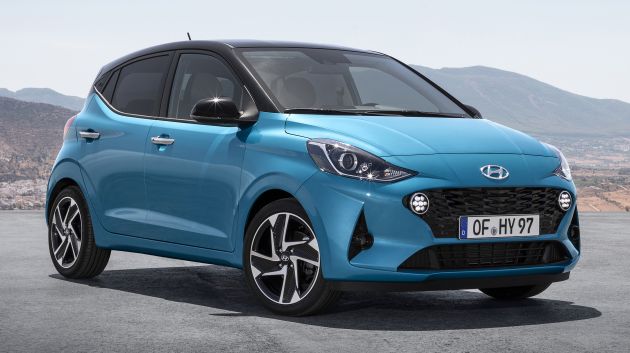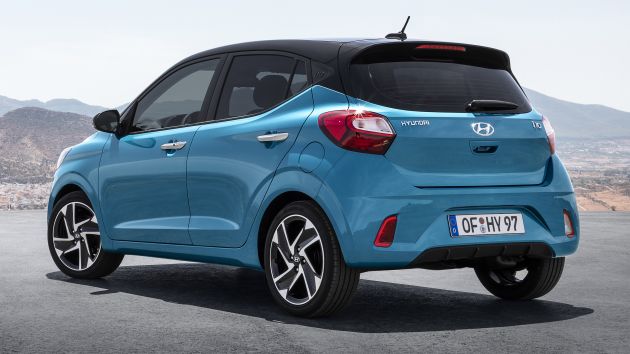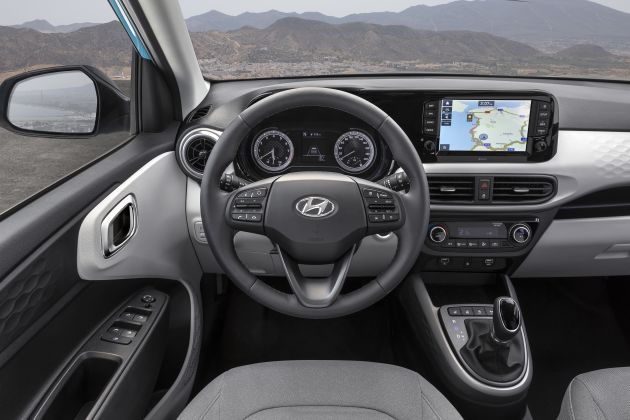Hyundai has pulled the wraps off its new i10, which makes its world premiere at next week’s Frankfurt Motor Show. The Euro-centric city car enters its third generation with a bold new look, some added features and a new gearbox option, but retains the same engines.
The styling was previewed by the Grand i10 Nios, a slightly stretched version for the Indian market, and most of the elements remain unchanged. You still get Hyundai’s Cascading Grille – here with round LED daytime running lights instead of the Nios’ arrow-shaped ones – along with shapely projector headlights and slim corner air inlets with round fog lights. A broad centre air intake has also sprouted on this version.
Along the side, the designers have added some muscle above the wheel arches, as well as a window line that sweeps upwards towards the X-shaped C-pillars, which are branded with the i10 logo. A contrasting roof option is available in either red or black, but unlike the Nios there are no roof rails here. The rear of the car sports wraparound tail lights, joined together by twin creases that break up the surfacing.
Inside, the design is again similar to that of the Nios, with the eight-inch infotainment touchscreen (said to be the largest in the class) combined with the instrument cluster as a single unit. The large decorative dashboard panel features a honeycomb pattern that is repeated in the door cards, while the round corners air vents are pushed to the ends of the dash to maximise the feeling of space.
Measuring 20 mm wider and lower than before, the new i10 – offered as both a four- and five-seater – boasts increased interior space thanks to the longer wheelbase, plus a 252 litre boot and a new storage compartment above the glovebox. Hyundai also claims visibility has improved all around, while a lower load lip, a two-level boot floor and one-hand foldable rear seats make it easier to fit larger items.
New features include Apple CarPlay and Android Auto connectivity, wireless charging and the option of Hyundai’s BlueLink telematics, enabling users to find their i10 and input their destination into the car’s navigation system, directly from a smartphone app. Buyers who specify the optional navigation system also receive a Hyundai Live Services subscription, adding real-time traffic, weather and speed camera information.
Safety-wise, the i10 benefits from the addition of autonomous emergency braking with pedestrian detection, lane keeping assist, driver attention warning, traffic sign recognition and auto high beam. As previously mentioned, the i10 maintains the use of the same engines as before, with roughly the same outputs.
These include a 1.0 litre naturally-aspirated three-cylinder engine with 67 PS and 96 Nm of torque, as well as a larger 1.2 litre four-pot with 84 PS and 118 Nm, both of which are fitted with automatic stop/start. While the standard gearbox remains a five-speed manual, the four-speed automatic has been replaced by a five-speed automated manual that is said to be lighter with reduced friction.
To improve fuel efficiency, the drag coefficient has been reduced slightly from 0.32 to 0.31. For even greater frugality, there’s an ECO Pack with optimised gear ratios, smaller 14-inch alloy wheels and just four seats.
Source: Read Full Article



